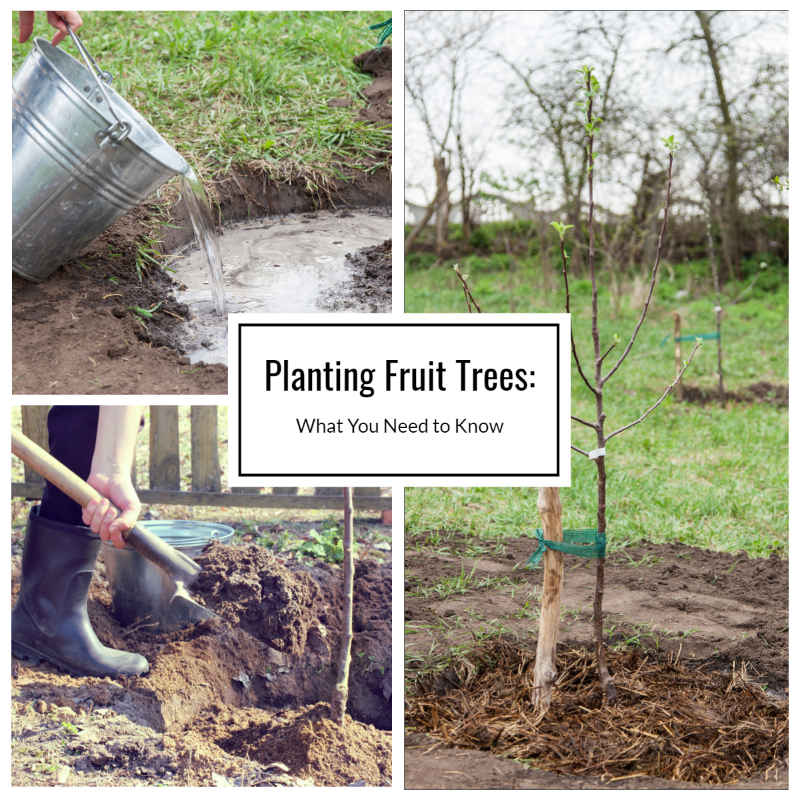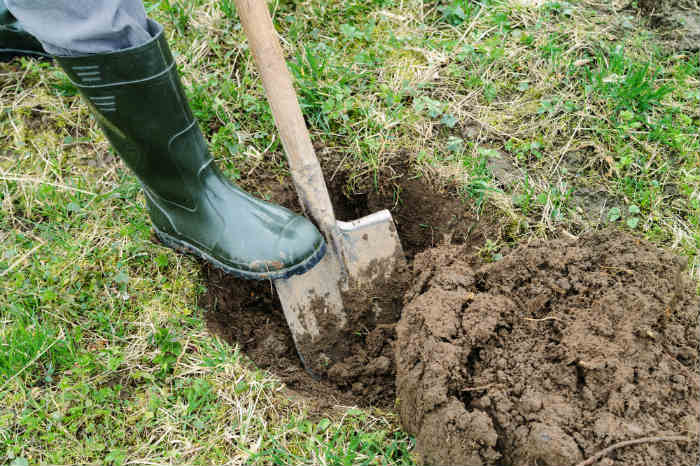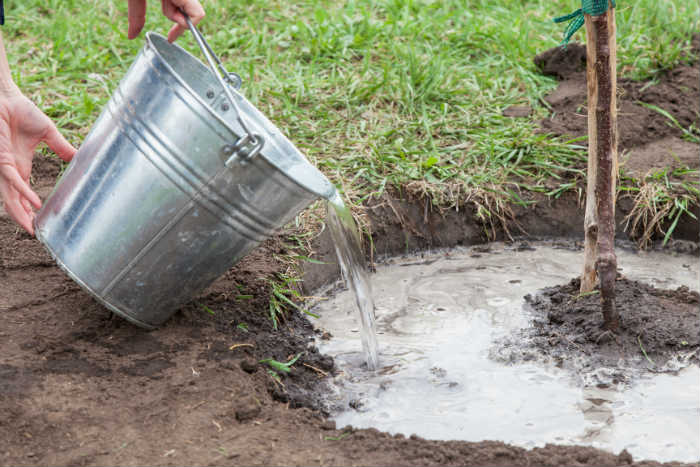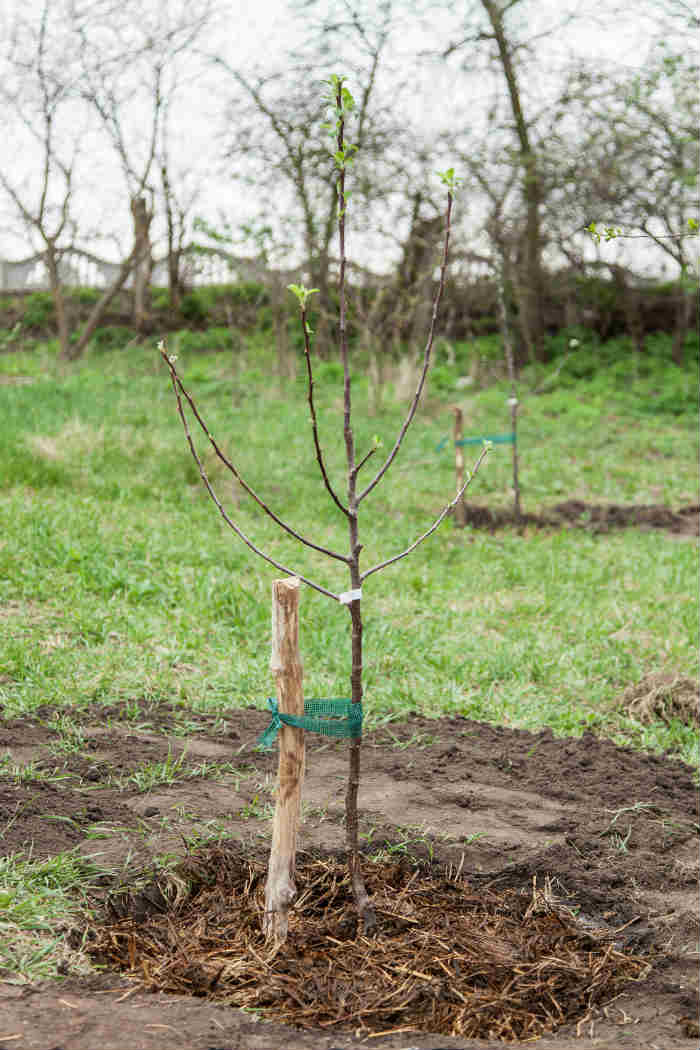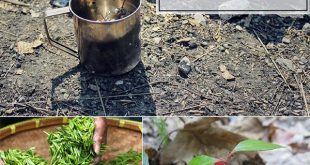Planting Fruit Trees: What You Need to Know
Adding fruit trees to your homestead doesn’t have to be complicated. Growing fruit on your homestead is a wise way to expand what you can produce without too much work. Once fruit trees are planted, they’ll provide for years to come with little work on your end. Planting fruit trees on your property is a no brainer!
Planting fruit trees requires more planning and forethought than actual work. Orchard growers say that you need to invest more time in the hole that you’re digging than the tree you purchase.
Here are the steps to planting a fruit tree.
1. Preparing the Site
The first step is to make the site for the tree. Fruit trees need at least six hours of full sunlight each day to produce fruit. Walk your property, looking for areas that have the necessary sunlight, without taller trees or your home to cast shade.
Make sure you imagine the full size of your tree. Don’t pick the location based on its current size or you risk having to move it later in the future, which is a pain in the butt.
Also, make sure the soil has proper drainage. The ground shouldn’t retain a lot of water, or the roots will rot in the ground. You want to scrape and remove the sod in a 2-3 foot diameter circle.
2. Deeply
It’s time to start digging your hole. You want to scrape and remove the sod in a 3-4 foot diameter circle. The hole should be twice as wide as the spread of the roots.
Put the soil into piles as you dig. You’ll notice as you move through the topsoil and the subsoil. The dirt has to go back into the hole later, so don’t get rid of it! Dig the hole to 1.5 to 2 feet deep. However, you don’t want to dig too deeply. If you’re working with a grafted bare root, the graft at the base must stay above the soil.
If you’re planting more than one tree, make sure you plant them at least 18 inches apart. Read the tag attached to the soil to give you an idea on how to space several fruit trees. Some require up to 20-feet of space around them when they reach maturity.
3. Rough Up The Hole
Roughing up the hole sounds weird, but roughing the bottoms and sides of the hole make it easier for roots to penetrate and grow into the soil. It’s particularly crucial for clay soil. To rough up the hole, chip away at the side of the hole to break away any compacted soil.
4. Amend the Soil
Ideally, you’ll have tested the soil before planting to determine what nutrients might be necessary for growth. If you didn’t, that’s fine, but try not to add too many nutrients because it will create an environment that will slow or stunt growth. You can use an essential fertilize mix that’s intended for fruit trees.
For those with clay-heavy soil or hard packed soil, you should work in compost or peat moss into the ground. These amendments help to loosen up the dirt, creating better drainage for water, and will help the tree’s roots expand.
5. Determine Planting Depth
Read the directions on your tree to see if they have a recommended planting depth. It might be marked on the tree itself. You can use a stick or yardstick to determine the right depth. Put the tree into the hole. If the hole is too deep, you might have to add more soil before putting the tree into the hole.
6. Refill the Hole
Now it’s time to refill the hole. First, when you put the tree into the hole, make sure you gently spread out the roots.
When you put the soil back into the hole, do it in the reverse order, even though it seems weird. Put the sod first, then the topsoil around the roots of the tree. Put the subsoil on top, tapping the soil into place. It might seem weird doing so, but the ground right under the grassroots is the most fertile soil.
7. Water and Add Mulch
After your tree is planted, add compost and soil around the tree in a bowl shape, leaving a “ditch” around the tree. You can also use any leftover soil from the hole that you just filled in since you won’t be able to put all of the dirt back into the hole. An ideal ditch around your tree is four feet in diameter. Water your new tree deeply, then continue to water your tree once a week throughout its first year of life.
8. Protect Your Fruit Tree
Young fruit trees are particularly vulnerable to pests, animals, and weather. It’s a wise idea to place two big stakes next to your tree and loosely tie the trunk to those stakes with fabric or loose twine. The stakes help to keep the tree secure during hard winds without harming its growth.
Placing a fence around the tree is also a good idea. A fence can stop rabbits and other animals from damaging the delicate tree trunk. All you have to do is wrap a 12-18” wire fence in a 6” distance from the trunk.
Some fruit tree growers like to protect their fruit tree from sunburn. To do so, mix a diluted solution of half white latex paint and half water, painting the tree trunk like a sunscreen. It’s a great idea to do this if you live in an area that has powerful sun, such as regions in the Southwestern United States.
When is the Best Time to Plant a Fruit Tree?
Most people plant fruit trees in the spring. Technically, fruit trees can be planted at any time of the year, but if you have cold winters or hot summers, the spring is the best choice.
Planting fruit trees in the spring gives the tree and roots time to adapt to the soil, and the roots can start to grow immediately. Plus, it’s much easier to dig in the dirt when it unthawed from the winter.
Do you have fruit trees? Let us know in the comments any tips for planting fruit trees!
 Home and Gardening Ideas At home and Gardening ideas we believe inspiring readers about homesteading, self sufficiency
Home and Gardening Ideas At home and Gardening ideas we believe inspiring readers about homesteading, self sufficiency
